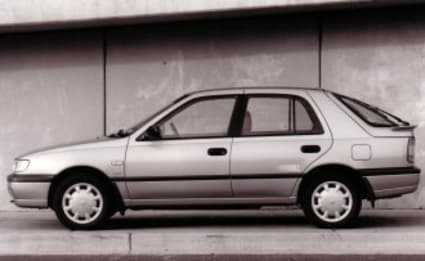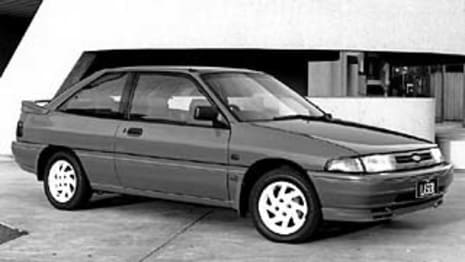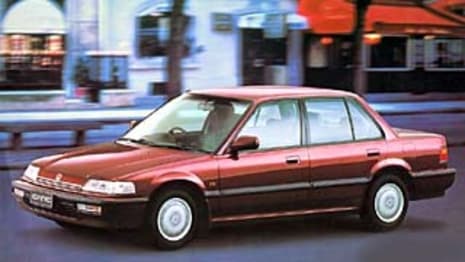
Used BMW E30 review: 1983-1991
- BMW 3 Series
- BMW 318i
- BMW 320i
- BMW 325i
- BMW 3 Series 1989
- BMW 3 Series 1983
- BMW 3 Series 1984
- BMW 3 Series 1985
- BMW 3 Series 1986
- BMW 3 Series 1987
- BMW 3 Series 1988
- BMW 3 Series 1990
- BMW 3 Series 1991
- BMW 318i 1983
- BMW 318i 1984
- BMW 318i 1985
- BMW 318i 1986
- BMW 318i 1987
- BMW 320i 1988
- BMW 320i 1989
- BMW 320i 1990
- BMW 325i 1991
- BMW 3 Series Reviews
- BMW 318i Reviews
- BMW 320i Reviews
- BMW 325i Reviews
- BMW Reviews
- BMW Coupe Range
- BMW Convertible Range
- Coupe
- Convertible
- BMW
- Used Car Reviews
- Buying tips
If the number of fresh faces I’ve recently seen driving BMW’s early 3-Series is a reliable guide the E30 has to be one of the coolest drives in town. With clean sporty looks, spirited performance and competent handling and braking, the E30 3-Series is seen as a cool alternative to the popular Japanese models that are beginning to lose some of their gloss in the eyes of young drivers.
MODEL WATCH
The E30 3-Series 318i first came on the local market in 1983 as a stylish and well proportioned rear-wheel drive two-door sedan, followed a year later by an equally pretty four-door version which made it more practical for carrying friends and families.
Power initially came from a 1-8-litre overhead camshaft fuel-injected four-cylinder engine that boasted peak power of 77kW and maximum torque of 145Nm. There was a choice of five-speed manual and three-speed auto transmissions, suspension was independent all round, and it had four-wheel disc brakes.
Standard features included power mirrors, tachometer, Eurovox radio/cassette sound system, full wheel trims, and a chrome tail pipe extension was added to the exhaust.
Central locking and Alpine radio/cassette sound became standard in 1985, and power steering became available as an option.
Sports suspension became standard in 1986, and the following year its performance was boosted with more power, which then climbed to 83 kW.
Power steering, leather sports steering wheel, air-conditioning, and a Eurovox radio/cassette sound system was added to the standard features list in 1989.
This post-’89 model is definitely the best choice if you want a four-door. It is still a sweet little car today, remaining tight and generally free of rattles and squeaks even with 160,000 km or more showing on the odometer.
Performance is brisk, the four-speed manual a delight to use, the clutch light. The ride is comfortable, handling responsive, and power steering quite precise even though it’s relatively light.
Inside there are bucket front seats, which are comfortable and supportive, clear and easy-to-read instruments and well laid-out controls, and a powerful sound system. Air-con adds to the comfort and a sunroof makes for pleasant driving on warm sunny days.
Perhaps the best of the E30 series was the 318is introduced in 1990. Available only as a two-door with five-speed manual gearbox the only choice, the 318is was powered by a sporty 24-valve double overhead camshaft 1.8-litre fuel-injected four -cylinder engine.
Peak power was 100 kW and max torque was 172 Nm, enough to have the 318is capable of 202 km/h.
Standard features were air-conditioning, power antenna, Eurovox radio/cassette, power steering, metallic paint, central locking, leather sports steering wheel, sports suspension, body coloured front and rear spoilers.
Leather trim, sports seats and ABS brakes were standard from October 1990.
ON THE LOT
It’s best to buy the latest model you can afford, that way you’ll get the car with the lowest mileage and the most life left in it.
On that basis the post-’89 models are the ones to go for. Expect to pay between $9000 and $13,500 for a two-door car with up to 190,000 km on the odometer; four-doors are $500 more expensive.
The pick of the E30 bunch, if you can live with a manual gearbox and two doors, is the sporty 318is built between 1990 and 1991, which can be yours for $10,500 to $15,500.
IN THE SHOP
Now up to 20 years old the E30 can be expected to be showing the wear and tear of a long life on the road so it’s wise to spend extra time checking any car you’re considering buying to avoid trouble.
Like most BMWs, the E30 3-Series was bought as a prestige car when new, and as a result many were well cared for, some even pampered, but as time has passed they have been passed down the line to second, third and more owners. Many of these later owners haven’t had the money to properly maintain the cars and as a result many have fallen into disrepair.
The best E30 to buy is the one-owner mint condition car that has been regularly serviced. But, as they are hard to find look for a car that has been obviously well cared for, one that has a verifiable service history. If the service records show the one mechanic has serviced the car make contact with them and check out its history.
Go over the body thoroughly looking for substandard accident repairs, mismatching sections of paint, badly fitting panels and hardware. Also check for rust around the rubbers at the bottom edges of the doors, and rust in the windscreen and rear window openings. Rust isn’t a common problem, but can be if insufficient sealant has been used when a windscreen is replaced.
A service history that can be verified is a must. It not only tells you that the car has been regularly serviced, but who has serviced it, and it gives you a good guide to the accuracy of the odometer reading. It would be nice to think that the car you’re buying has been serviced by a BMW dealer, but that would be a rarity in a car as old as the E30 is now, so don’t be put off if it hasn’t been serviced by a BMW dealer.
The most critical thing to check is that the cam timing belt has been regularly changed. BMW recommend that it be replaced about every 40,000 km, which equates to about two years of normal driving. If it hasn’t been replaced there is a real risk that it will break or strip, and that can mean substantial, and expensive internal damage to the engine. It only takes about two hours to replace the belt so it’s worth having it done.
Also check the engine for a build-up of oil sludge. The easiest way to do this is to look through the oil filler cap. A thick layer of sludge could mean an engine rebuild soon, as the sludge gradually blocks all of the oil feed lines in the engine. This normally doesn't occur with regular servicing and good quality oil, but with lower quality engine oil and missed services it's a possibility.
The 3-Series is quite a sporty little car so look for signs that it has been modified or thrashed by youthful or inexperienced drivers. Look for non-genuine parts like sports exhausts, lowered and stiffened suspension and larger wheels.
The trim generally stands up well, although you can expect to see some warped and discoloured plastic components on the dash and rear parcel shelf.
LOOK FOR:
• Sporty styling still has plenty of drive-by appeal.
• Trim, taut and terrific body has few rattles and squeaks.
• Brisk performance with responsive handling and good braking.
• Verifiable service history that confirms replacement of cam belt.
ALTERNATIVES:
Ford Laser KF hatch – 1990-91 – $2000-$5000
Toyota Corolla CS – 1989-91 – $2000-$7000
Nissan Pulsar – 1991-92 – $2500-$8500
Honda Civic – 1990-92 – $4000-$9500
Pricing
| Year | Price From | Price To |
|---|---|---|
| 1991 | $1,760 | $10,890 |
| 1990 | $1,760 | $10,890 |
| 1989 | $1,760 | $10,120 |
| 1988 | $3,190 | $10,120 |
| 1987 | $2,640 | $9,020 |
| 1986 | $2,640 | $9,020 |
| 1985 | $2,640 | $14,300 |
| 1984 | $2,640 | $13,200 |
| 1983 | $2,640 | $9,240 |
Pricing guides
Range and Specs
| Vehicle | Specs | Price* | |
|---|---|---|---|
| 318i | 1.8L, Leaded, 3 SP AUTO | $2,640 – 4,070 | 1983 BMW 3 Series 1983 318i Pricing and Specs |
| 323i | 2.3L, Leaded, 5 SP MAN | $3,960 – 5,830 | 1983 BMW 3 Series 1983 323i Pricing and Specs |
Other cars to consider
$3,080
Lowest price, based on third party pricing data













